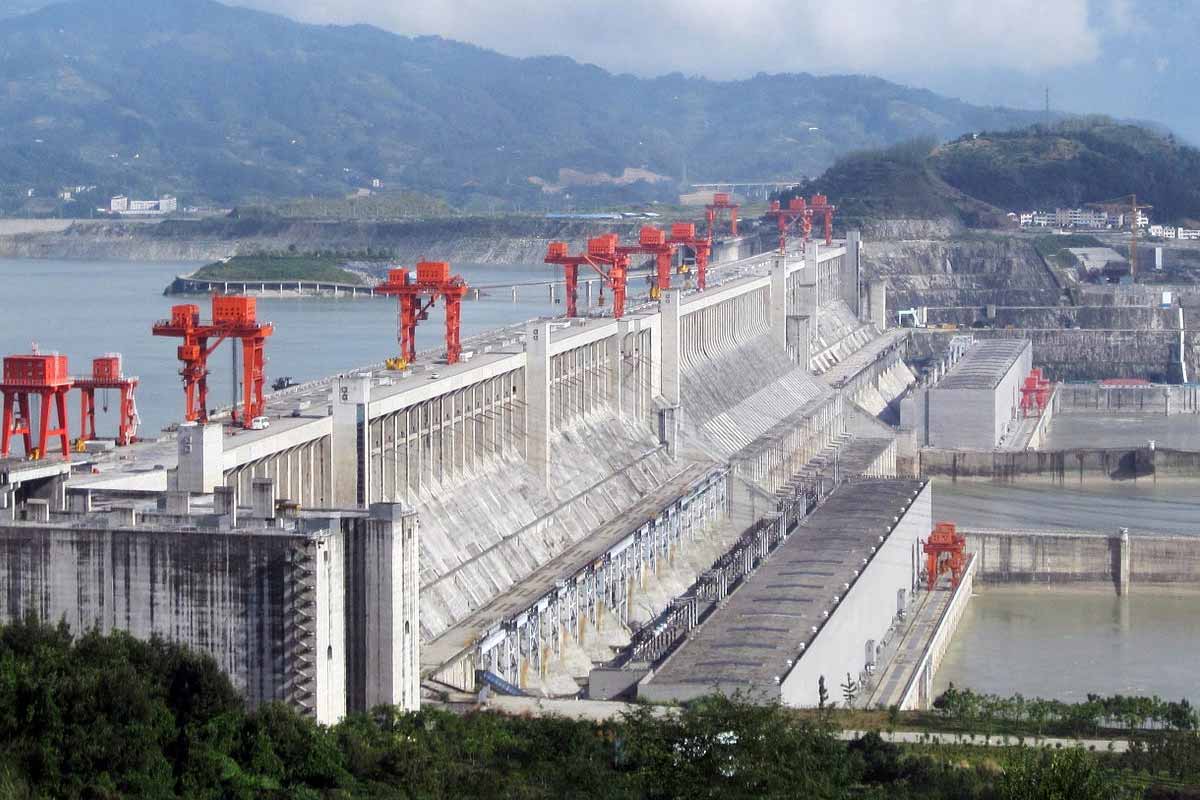A vast wall of water can slow a spinning world, and the evidence is now measurable. NASA-backed research shows the Three Gorges Dam is shifting mass enough to stretch each day by a hair. Scientists expected subtle effects, yet the figures still startle, because they link engineering to planetary motion. The message is simple, while the physics is deep: build big enough, and even Earth’s clock ticks differently for us.
Core physics behind the Three Gorges Dam time effect
The dam rises 175 meters above sea level in western Wuhan, storing vast mass. When the reservoir holds about 10 trillion gallons, geophysicist Benjamin Fong Chao at NASA’s Goddard says a slowdown follows. Because the water sits higher and farther from Earth’s axis, rotation eases, though only by microseconds.
The mechanism is the moment of inertia, which controls how hard it is to change spin. The Three Gorges Dam pushes mass outward, so the planet turns more slowly, like a skater extending arms. Pull mass inward and speed returns; spread mass outward and spin resists change across every cycle.
Measurements link the reservoir’s peak to a 0.06 microsecond daily extension, and that is precise. The figure sounds small; however, it is robust, because modern timekeeping watches Earth wobble and drift. Researchers fold the signal into long records to separate seasonal wiggles from more permanent shifts.
How mass redistribution subtly slows Earth’s spin
Comparisons help the scale make sense, since natural shocks can move time too. After the 2004 Indian Ocean earthquake, days shortened by 2.68 microseconds because tectonic plates shoved mass inward. Against that yardstick, the dam’s change is gentle; yet it stays detectable across precise timing arcs maintained for decades.
Shifts appear in shape as well as pace, while polar motion responds to mass flow and makes Earth slightly flatter. Research indicates the North and South Poles drift by about two centimeters, or 0.8 inches, when the reservoir is filled. Small, yes, though the nudge suggests human works can register within geophysical baselines.
Astronomers and geodesists refine clocks and orbits using these drifts, and the Three Gorges Dam gives a clear anthropogenic marker. Because the signal repeats with water levels, models gain confidence and reduce noise, so estimates sharpen year after year for navigation, satellites, and precise spaceflight timing worldwide.
Power, costs, and fractures around the Three Gorges Dam
Scale is the draw, because energy output becomes vast when turbines run near capacity. At full output, daily generation reaches 0.54 terawatt-hours, which can supply 5.4 million households for a month. As the world’s largest power station, the investment was ¥203 billion, about $31.765 billion, signaling a long bet on hydroelectric power.
Tradeoffs came with that bet, as valleys turned into a reservoir with 22 cubic kilometers of flood storage. Construction drowned 13 cities and 140 towns, while residents left ancestral ground along the old river. Reports count more than 31 million people displaced overall, and the shoreline transformed into a managed inland sea.
Supporters cite cleaner baseload electricity; critics point to ecological scars that time may not heal near the Three Gorges Dam. Both positions hold evidence, since sediment, fisheries, and landslides affect daily life; moreover, cultural memory shapes acceptance across generations, regions, and river communities facing change.
Timelines, polar motion, and climate signals
Long records reveal slower trends, because climate and deep Earth steer the axis we measure. A Nature study titled “Contributions of core, mantle and climatological processes to Earth’s polar motion” estimates day length rises about 1.33 milliseconds per century since 2000. Ice melt and groundwater shifts add momentum changes scientists still untangle.
Ambition is not slowing, as planners consider larger concepts on land and in orbit. China has floated a space-based power station idea at comparable scale, which would beam energy to Earth. Authorities also approved a plan for a dam three times larger on the Yarlung Tsangpo River.
Physics would scale with those designs, so mass placement still decides spin; likewise, hydrology dictates pole drifts satellites sense. Practical effects remain tiny for clocks we live by; yet measurement becomes another fingerprint to track. It helps isolate climate signals, while the Three Gorges Dam stays a reference case models test.
Megastructure scale and what it really changes
Human ambition shows in frames, since scale defines skylines and orbits. Think of the Great Wall, Beijing Daxing International Airport, or the Burj Khalifa; the International Space Station adds reach. Each project leaves a trace, though only some move enough mass to tilt measurements, while telescopes chase a ninth planet.
Perspective keeps fear in check, because the daily extension is 0.06 microseconds, not tenths or seconds. Over the universe’s age, that sums to roughly three days, which changes nothing about sleeping or schedules. Jokey posts about longer work hours circulate online; however, scientists stress the effect is academic, not practical.
Monitoring still matters, and the Three Gorges Dam provides a clean anthropogenic test case for geodesy and precision navigation worldwide. Add many projects together and small terms might combine, so baselines must stay sharp to protect vital systems people trust every single day, everywhere on Earth.
Why a tiny daily delay still reshapes how we think about Earth
The measurement is slight, yet the signal teaches restraint and curiosity, because the Three Gorges Dam links infrastructure to planetary math. Numbers give context to pride and concern, while tradeoffs become clearer across decades. Design choices must weigh megawatts, emissions, relocations, and measurable microseconds, since timekeeping now records them. Engineers will keep building; therefore, researchers will keep tracking; society, in turn, will choose its scales with eyes open, carefully and transparently.
